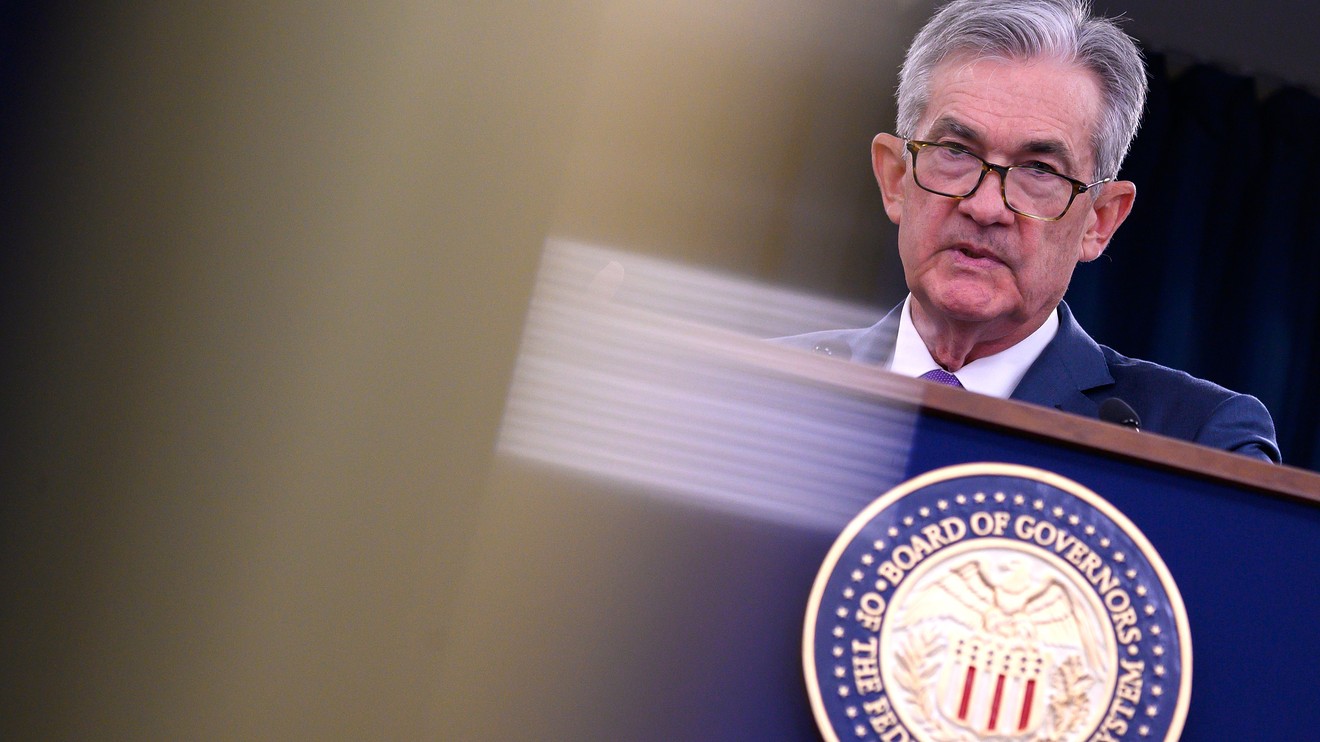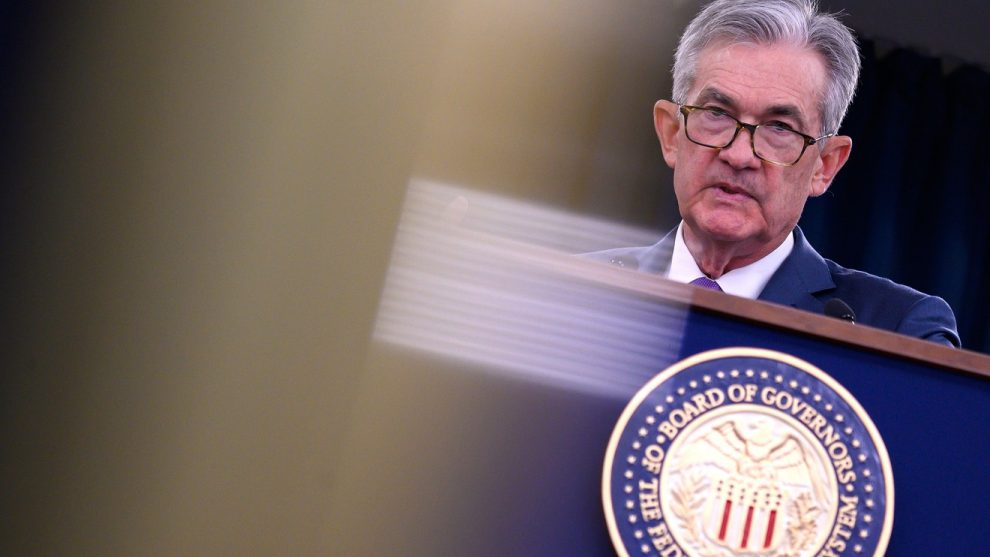
A stronger dollar and a flatter yield curve were probably not what Federal Reserve policy makers had in mind.
Read: Fed cuts interest rates by quarter point, but plays down scope for significant easing
But that’s what they got Wednesday, along with the steepest one-day stock-market selloff since late May, after a widely expected rate cut by the Federal Reserve rattled financial markets. Chairman Jerome Powell, in a news conference, signaled that policy makers weren’t convinced of the need to embark on a full-fledged round of easing, describing the easing as a “mid-cycle adjustment.”
See: ‘As usual, Powell let us down,’ Trump tweets after Fed fails to back stronger monetary easing
Investors, however, shouldn’t read too much into the kneejerk reaction — especially one that comes after months of mounting expectations for aggressive easing despite economic data that has led some economists to question the need for any cuts at all.
“Markets had been pricing in one, two and now three cuts going into this decision day, and the trick for the Fed chair was to signal a responsiveness but not a sense of alarm that things are slowing too quickly,” said Christopher Smart, chief global strategist and head of the Barings Investment Institute, in a phone interview. “And I think that’s a very narrow path for them to walk.”
Indeed, had Powell signaled the Fed was preparing deeper cuts, he could potentially have sparked fears the economy is much weaker than indicated by current data, Smart said.
It ended up, however, that Powell’s description of the rate cut as a mid-cycle adjustment and not necessarily the start of a lengthy series of rate cuts combined to send “a bit of a shock wave into the markets and is in direct contradiction to the market expectations of continued cuts over the remainder of the year,” said Chris Gaffney, president of world markets at TIAA Bank.
Here’s a look at how markets reacted and what analysts and investors had to say about it:
Dollar rallies
The ICE U.S. Dollar Index DXY, +0.39% , a measure of the currency against six major rivals, rose 0.5% to trade at a two-year high. A stronger dollar tightens financial conditions and provides headwind to U.S.-based companies selling goods and services overseas.
Indeed, the dollar rally could also be a continued source of pressure for other assets, putting pressure on commodities and emerging markets, analysts said.
The dollar’s unwelcome strength looms large for investors, particularly in a world where other major central banks are also in easing mode — a backdrop that’s led some analysts to argue that easier policies by the world’s monetary authorities are unlikely to have the desired effect.
See: Markets are warning that ‘monetary policy will not work,’ says BofA Merrill Lynch
As for the U.S., the “real problems the economy faces are uncertainty over trade policy and a dollar that’s too strong,” said Chris Zaccarelli, chief investment officer for the Independent Advisor Alliance. “In theory, cutting rates could help the latter problem, but in practice it will be ineffective because the [European Central Bank] and [Bank of Japan] are easing policy as quickly — if not quicker — than the Fed.”
Yield curve flattens
Ideally, a Fed easing would be expected to lead to a steeper yield curve, with yields on longer-dated Treasurys lifted by expectations for growth and inflation to get a boost from stimulus. That didn’t happen Wednesday. Guy LeBas, chief fixed income strategist at Janney, laid it out in a tweet:
Granted, like in other market reactions, there may have been an element of “buy the rumor, sell the fact.” As noted by MarketWatch’s Sunny Oh, bets on a steeper yield curve had made for a very popular trade in the runup to Wednesday’s Fed decision.
Stock-market selloff
Stocks extended their decline during Powell’s news conference, with the Dow Jones Industrial Average DJIA, -1.23% dropping nearly 500 points at its session low before ending the day down more than 330 points, a drop of 1.2%, while the S&P 500 SPX, -1.09% shed 1.1% — the biggest one-day percentage declines for both gauges since May 31.
Stocks hit their lows after Powell said the move wasn’t necessarily the start of a “lengthy” cycle of cuts, then trimmed losses as he later clarified that he wasn’t saying Wednesday’s decision marked a one-time cut. That said, stocks came into Wednesday’s session with major indexes less than 1% away from all-time closing highs set earlier in the month.
Read: Fed’s hawkish rate cut could be good for the stock market in the long run, analysts say
Gold
Gold futures, which had rallied strongly this year to trade at six-year highs, ended lower on Wednesday ahead of the Fed decision, then extended losses in electronic trade as the dollar rallied in reaction to Powell’s remarks.
Analysts had warned that gold could be due for a setback on a “sell-the-fact” reaction to a rate cut. Meanwhile, commodities in general were expected to take their cue from the dollar’s reaction to the Fed move, given their often strong inverse correlation between the strength of the U.S. currency.
But with all major central banks likely to deliver additional stimulus in coming months, continuing to put pressure on global bond yields, gold should continue to be favored as an investment for yield-hungry investors , said Edward Moya, senior market analyst at Oanda, in a note.











Add Comment